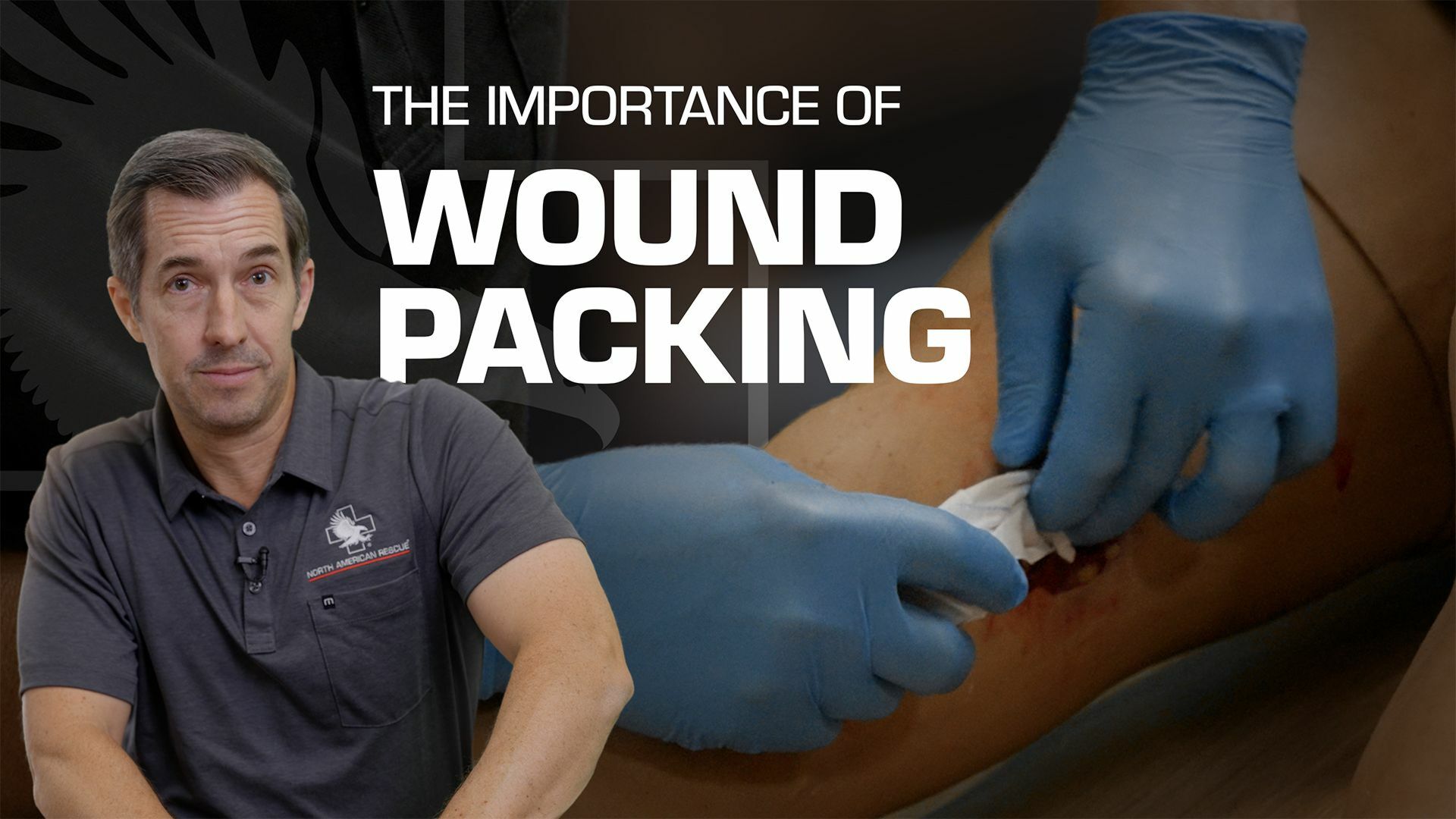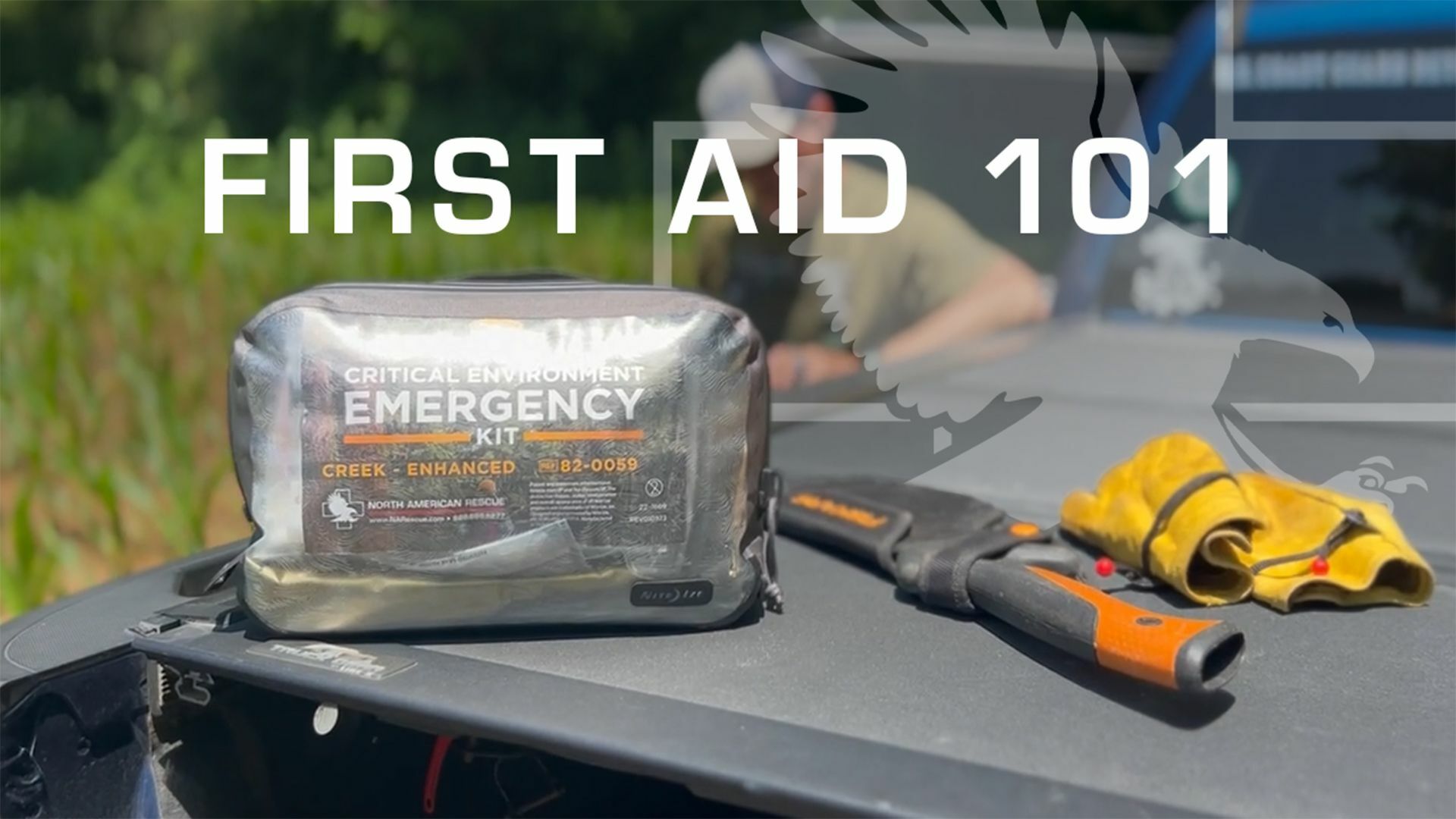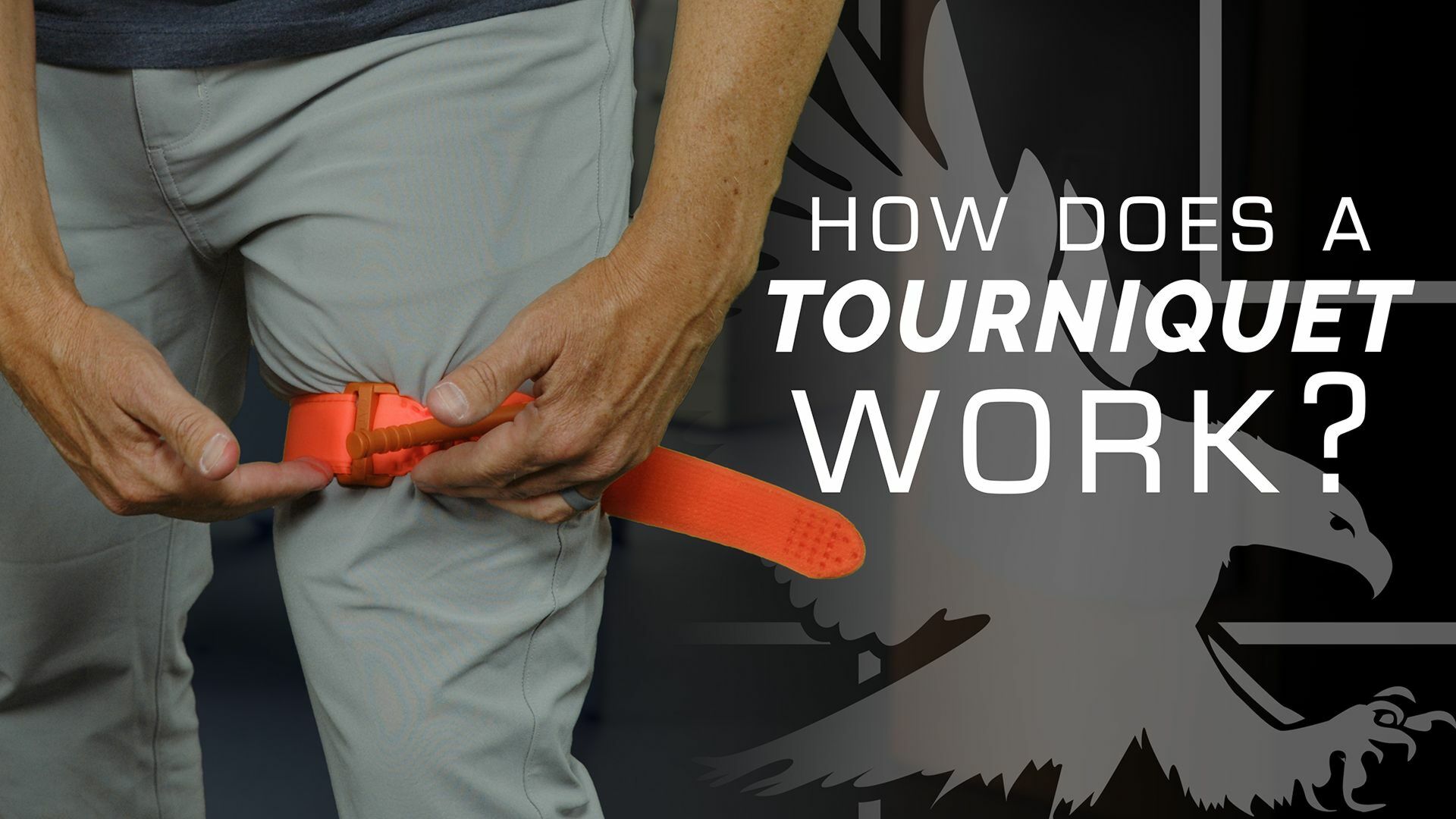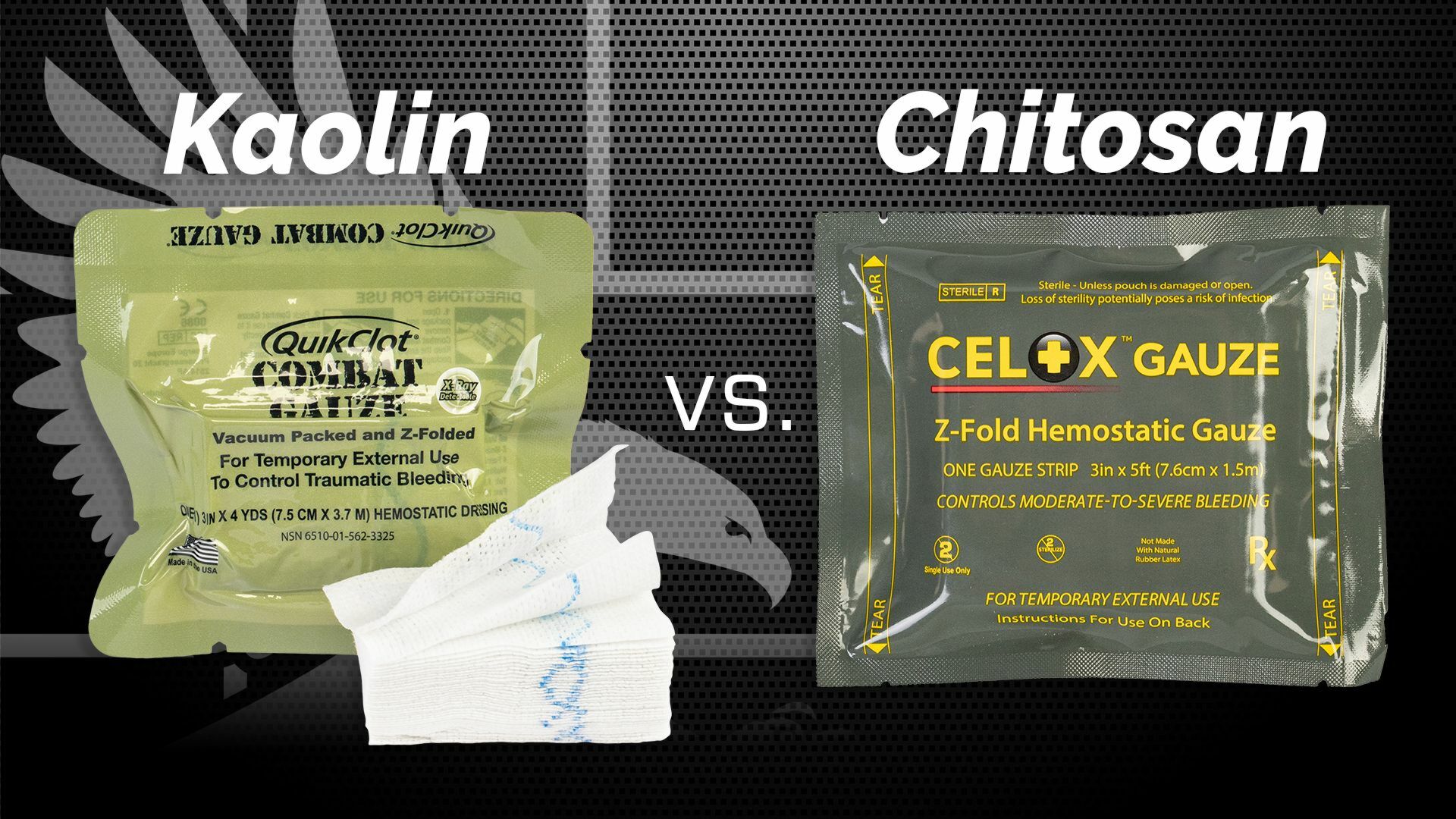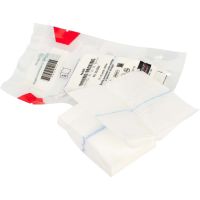We've got our casualty, they've got a wound on the lower extremity. Doc Miles here, I'm going to talk about wound packing. I'm going to start by creating a little ball. I'm going to place it deep into the wound, and then I'm going to continue to feed it while maintaining pressure into the base of the wound.
My goal is to fill that cavity rapidly and maintain pressure the entire time. Because what I want to do is get down to the wound to any bleeding vessels and put transluminal pressure on that vessel. So we keep it occluded, and we're filling that void. Now, once I start to run out of room to pack this gauze into, I can simply take the rest, ball it up, and place it over the wound.
Notice how I'm holding the entire time, this time with my left hand. But I'm holding that pressure the entire time. Once complete and I've made my ball, I'm going to hold that pressure. If it's a hemostatic, typically we're going to go for three minutes until we apply that pressure dressing. I may hold it until a higher level of care comes and relieves me, or I may hold that pressure all the way to the hospital.

